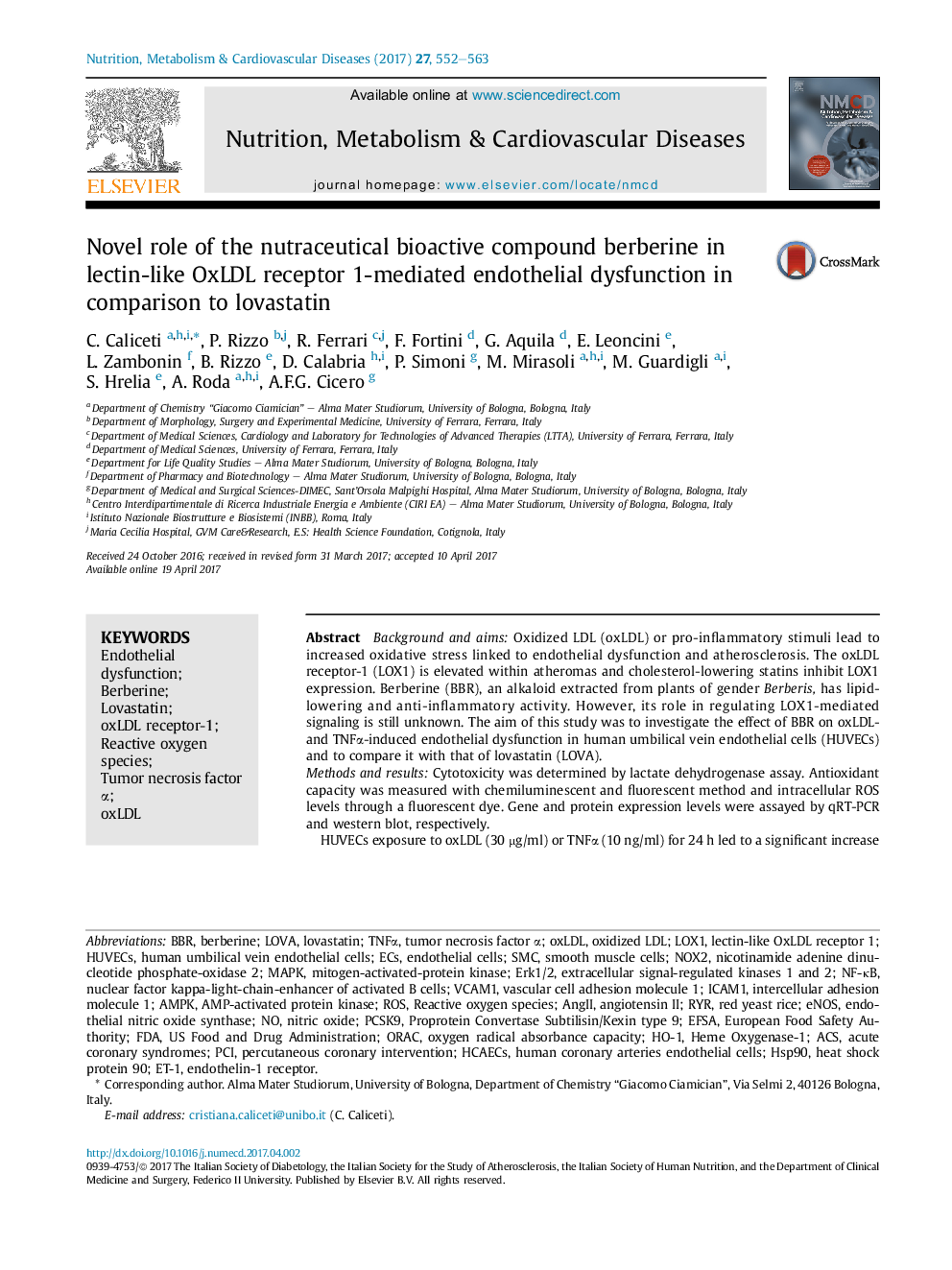| کد مقاله | کد نشریه | سال انتشار | مقاله انگلیسی | نسخه تمام متن |
|---|---|---|---|---|
| 5619064 | 1406051 | 2017 | 12 صفحه PDF | دانلود رایگان |

- LOX1 is elevated within atheromas and statins inhibit LOX1 expression.
- BBR and LOVA reduced LOX1 expression in ECs but didn't share common mechanisms.
- BBR counteracted NOX2-derived ROS, MAPK/Erk1/2 and NF-κB activation.
- LOVA partially restored TNFα-reduced eNOS gene expression in ECs.
- Blocking LOX1 with BBR could be a promising approach for cardio-protection.
Background and aimsOxidized LDL (oxLDL) or pro-inflammatory stimuli lead to increased oxidative stress linked to endothelial dysfunction and atherosclerosis. The oxLDL receptor-1 (LOX1) is elevated within atheromas and cholesterol-lowering statins inhibit LOX1 expression. Berberine (BBR), an alkaloid extracted from plants of gender Berberis, has lipid-lowering and anti-inflammatory activity. However, its role in regulating LOX1-mediated signaling is still unknown. The aim of this study was to investigate the effect of BBR on oxLDL- and TNFα-induced endothelial dysfunction in human umbilical vein endothelial cells (HUVECs) and to compare it with that of lovastatin (LOVA).Methods and resultsCytotoxicity was determined by lactate dehydrogenase assay. Antioxidant capacity was measured with chemiluminescent and fluorescent method and intracellular ROS levels through a fluorescent dye. Gene and protein expression levels were assayed by qRT-PCR and western blot, respectively.HUVECs exposure to oxLDL (30 μg/ml) or TNFα (10 ng/ml) for 24 h led to a significant increase in LOX1 expression, effect abrogated by BBR (5 μM) and LOVA (5 μM). BBR but not LOVA treatment abolished the TNFα-induced cytotoxicity and restored the activation of Akt signaling. In spite of a low direct antioxidant capacity, both compounds reduced intracellular ROS levels generated by treatment of TNFα but only BBR inhibited NOX2 expression, MAPK/Erk1/2 signaling and subsequent NF-κB target genes VCAM and ICAM expression, induced by TNFα.ConclusionsThese findings demonstrated for the first time that BBR could prevent the oxLDL and TNFα - induced LOX1 expression and oxidative stress, key events that lead to NOX, MAPK/Erk1/2 and NF-κB activation linked to endothelial dysfunction.Chemical compounds studied in this articleBerberine (PubChem CID: 2353); Lovastatin (PubChem CID: 53232).
Journal: Nutrition, Metabolism and Cardiovascular Diseases - Volume 27, Issue 6, June 2017, Pages 552-563